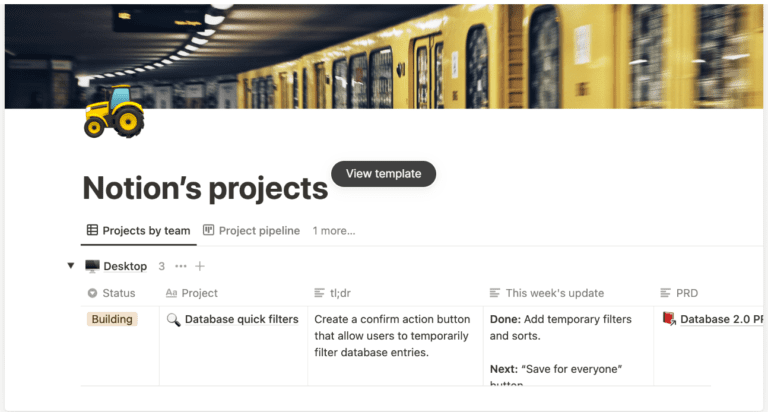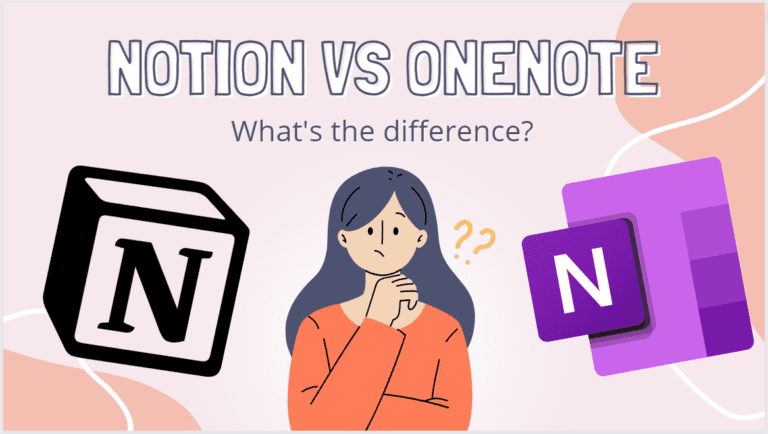How To Improve Software Development with Lean Agile Principles in 2023

Lean Agile has become a buzzword in the software development world, as more and more companies strive to eliminate waste, improve efficiency, and maximize customer value. This comprehensive guide will explore the fundamental principles of Lean Agile and how implementing these agile and lean methodologies can lead to continuous improvement and higher customer satisfaction in your software development teams.
We’ll cover the history and development of Lean Agile development, its core principles, various methodologies, tools, and best practices to help you transform your software development process.
The Origins of Lean Agile Methodology
Agile Software Development
Agile software development has its roots in the Agile Manifesto, a set of values and principles created in 2001 by a group of software development experts seeking to improve the development process.
Agile methodologies, such as Scrum, Extreme Programming (XP), and Kanban, prioritize iterative development, customer collaboration, and adaptability over rigid processes and contract negotiation.
Lean Manufacturing and Lean Thinking
Lean thinking originates from the Toyota Production System (TPS), a revolutionary lean production approach to manufacturing that reduced waste and improved efficiency in the global car industry. The core principles of Lean Manufacturing include eliminating waste, building quality into the product, creating a continuous flow of work, and deferring commitment until the last responsible moment.
Lean Manufacturing has since been adapted for various industries, including software development, giving rise to Lean Software Development.
Lean Agile Principles

There are multiple interpretations of the lean and agile principles, here is the most common interpretation.
Lean Agile is a combination of Agile software development and Lean manufacturing principles. The primary goal of Lean Agile is to maximize customer value while minimizing waste and improving efficiency in the software development process. Key principles of Lean Agile include:
Continuous improvement: Constantly seeking to refine processes and methodologies to enhance efficiency, product quality, and customer satisfaction.
Customer value-driven development: Focusing on delivering features and functionality that provide the most value to customers.
Eliminating waste: Identifying and eliminating unnecessary steps, activities, or resources that do not contribute to customer value.
Empowering teams: Encouraging cross-functional teams to take ownership of their work and make decisions based on their expertise and knowledge of the project.
Adaptability and flexibility: Encouraging teams to embrace change, adapt to new information, and pivot as needed to better serve customer needs and business goals.
Implementing Lean Agile Methodologies

Software development teams can implement Lean Agile methodologies by adopting Agile processes, such as Scrum or Kanban, while incorporating Lean principles, such as eliminating waste and focusing on customer value.
Adopting the agile methods creates a more streamlined and customer-centric development cycle or process, with teams (typically called agile or lean teams= that are better equipped to adapt to changing requirements and priorities.
Scrum
Scrum is an iterative, incremental Agile framework that emphasizes collaboration, accountability, and iterative progress. Scrum teams work in short, time-boxed iterations called sprints, with a focus on delivering potentially shippable increments of working software at the end of each sprint.
Kanban
Kanban is an Agile method that focuses on visualizing the workflow, limiting work in progress (WIP), and managing the flow of work to improve efficiency and reduce waste. Kanban boards are used to visualize the workflow, making it easy for team members to see the status of tasks and identify bottlenecks or areas for improvement.
Agile Project Management and Agile Transformation

The Role of Agile Project Management
Agile Project Management plays a crucial role in Lean Agile software development, as it helps teams navigate the development process while staying true to Agile principles. Agile Project Managers, Scrum Masters, and other Agile team members must ensure that their teams continuously adapt and respond to customer needs, prioritize work effectively, and maintain a sustainable pace. Key aspects of Agile Project Management include:
Iterative planning and execution: Breaking down projects into smaller, manageable tasks and delivering them in short iterations, allowing for flexibility and adaptability in response to changes in customer needs and business priorities.
Continuous collaboration and communication: Ensuring that team members, stakeholders, and customers maintain open lines of communication, fostering a culture of transparency and collaboration.
Risk management and adaptation: Proactively identifying potential risks and obstacles, and adapting the project plan and approach to address them effectively.
Agile Transformation
An Agile transformation is the process of transitioning an organization from traditional development methods to Lean Agile principles and practices. This transformation often involves a shift in mindset, processes, and organizational culture to better align with the values of Agile software development and Lean thinking. The benefits of undergoing an Agile transformation can include:
Increased customer satisfaction: By focusing on delivering customer value and incorporating customer feedback, Agile teams can better meet customer needs and expectations.
Reduced waste and improved efficiency: Lean Agile practices, such as eliminating waste and implementing continuous improvement, can lead to more streamlined processes and better resource utilization.
Enhanced collaboration and teamwork: Cross-functional teams that work together closely and communicate effectively can foster a culture of collaboration, innovation, and shared ownership of project outcomes.
Faster time to market: With iterative development and continuous delivery, Agile teams can release software faster and respond more quickly to market demands and changes.
Tools and Techniques for Lean Agile Software Development

Value Stream Mapping
Value Stream Mapping (VSM) is a Lean technique used to visualize and analyze the flow of materials and information within a process, with the goal of identifying waste and opportunities for improvement.
In Lean Agile software development, VSM can help teams understand their development process and identify areas where waste can be eliminated or processes can be optimized.
Continuous Integration and Continuous Delivery (CI/CD)
Continuous Integration (CI) is the practice of merging code changes into a central repository frequently, enabling developers to identify and address integration issues early. Continuous Delivery (CD) is the practice of automating the delivery of software to production, ensuring that software is always in a releasable state.
Together, CI/CD enables Lean Agile teams to maintain a continuous flow of work and ensure that working software is always available for release.
Test-Driven Development (TDD) and Behavior-Driven Development (BDD)
Test-Driven Development (TDD) is an Agile software development technique that involves writing tests before writing the code to fulfill the tests. This practice helps ensure that code is thoroughly tested and reduces the risk of defects.
Behavior-Driven Development (BDD) is an extension of TDD that emphasizes collaboration between developers, testers, and business stakeholders to define software requirements in the form of user stories and acceptance criteria.
Both TDD and BDD can help Lean Agile teams build quality into their software from the start and reduce the need for rework.
Wrap Up
Lean Agile is revolutionizing the software development industry by combining the best of Agile Software Development and Lean Manufacturing principles. By embracing a Lean Agile mindset, software development teams can continuously improve their processes, focus on customer value, and create high-quality products.
By implementing the techniques outlined in this artile, your development teams can not only benefit from increased efficiency and reduced waste but also enjoy higher customer satisfaction and a more competitive edge in the ever-evolving world of software development.
Frequently Asked Questions

What is Lean Agile software development?
Lean Agile software development is an approach that combines the principles of Agile Software Development and Lean Manufacturing to create a more efficient, customer-centric, and adaptive software development process. It emphasizes continuous improvement, customer value-driven development, eliminating waste, empowering teams, and maintaining adaptability and flexibility.
How does Lean Agile differ from traditional Agile software development?
While traditional Agile software development focuses on iterative development, customer collaboration, and adaptability, Lean Agile takes it a step further by incorporating Lean principles, such as eliminating waste, building quality into the product, creating a continuous flow of work, and deferring commitment until the last responsible moment. This combination of Agile and Lean principles helps create a more streamlined and efficient development process that maximizes customer value.
How can my software development team implement Lean Agile methodologies?
Your software development team can implement Lean Agile methodologies by adopting Agile processes, such as Scrum or Kanban, while also incorporating Lean principles into your development process. This can involve practices like value stream mapping, continuous integration and delivery, test-driven development, and behavior-driven development. Additionally, fostering a culture of continuous improvement, open communication, and cross-functional collaboration can help teams embrace a Lean Agile mindset.
What is the role of Agile Project Management in Lean Agile software development?
Agile Project Management plays a crucial role in Lean Agile software development by helping teams navigate the development process while staying true to Agile principles. Agile Project Managers, Scrum Masters, and other Agile team members must ensure that their teams continuously adapt and respond to customer needs, prioritize work effectively, and maintain a sustainable pace. Key aspects of Agile Project Management include iterative planning and execution, continuous collaboration and communication, and proactive risk management and adaptation.
How does an Agile transformation support Lean Agile software development?
An Agile transformation is the process of transitioning an organization from traditional development methods to Lean Agile principles and practices. This transformation often involves a shift in mindset, processes, and organizational culture to better align with the values of Agile software development and Lean thinking. Undergoing an Agile transformation can lead to increased customer satisfaction, reduced waste, improved efficiency, enhanced collaboration, and faster time to market, all of which support the goals of Lean Agile software development.
What are some common tools and techniques used in Lean Agile software development?
Some common tools and techniques used in Lean Agile software development include value stream mapping, continuous integration and continuous delivery (CI/CD), test-driven development (TDD), and behavior-driven development (BDD). These tools and techniques can help teams visualize their workflow, automate the delivery of software, build quality into their products from the start, and collaborate effectively on defining software requirements.
How does Lean Agile software development improve customer satisfaction?
Lean Agile software development improves customer satisfaction by focusing on delivering features and functionality that provide the most value to customers. By emphasizing customer collaboration and incorporating customer feedback throughout the development process, Agile teams can better meet customer needs and expectations.
Additionally, Lean Agile practices such as continuous delivery and iterative development enable teams to release software faster and respond more quickly to market demands and changes.
Can Lean Agile be applied to non-software development projects?
Yes, Lean Agile principles can be applied to non-software development projects as well. The core principles of Lean Agile, such as continuous improvement, customer value-driven development, eliminating waste, and empowering teams, are universally applicable across various industries and project types.
By adapting these principles to the unique needs and constraints of your specific project, you can benefit from a more efficient and customer-centric approach to project management.
What are the main challenges when implementing Lean Agile software development?
Implementing Lean Agile software development can present several challenges, including resistance to change, lack of understanding or buy-in from stakeholders, and difficulties in shifting organizational culture. To overcome these challenges, it is essential to provide training and education on Lean Agile principles and practices, communicate the benefits and value of the transformation, and involve all stakeholders in the process. Additionally, fostering a culture of continuous improvement, open communication, and cross-functional collaboration can help teams more easily embrace the Lean Agile mindset and overcome potential obstacles.
How can we measure the success of our Lean Agile software development efforts?
There are several key performance indicators (KPIs) that can help you measure the success of your Lean Agile software development efforts. These may include:
- Customer satisfaction: Gauging customer feedback and satisfaction levels can help you determine if your Lean Agile efforts are meeting customer needs and expectations.
- Cycle time and lead time: Monitoring the time it takes for tasks to be completed and for features to be delivered can help you assess the efficiency of your development process.
- Work in progress (WIP): Keeping track of the amount of work in progress can help you identify bottlenecks and areas for improvement in your development process.
- Defect rates and quality metrics: Measuring the number of defects and other quality-related metrics can help you determine if your Lean Agile practices are resulting in higher-quality software.
- Business value delivered: Assessing the business value delivered by your software development efforts can help you understand the overall impact of your Lean Agile practices on your organization’s bottom line.
By tracking these KPIs and making adjustments as needed, you can continuously refine your Lean Agile software development process and maximize the benefits of this approach for your organization.
I also write about other topics! Some of these may interest you (especially if you like productivity apps)
- Book summary apps – Headway App vs Blinkist vs getAbstract
- AI Writers / Blogging – Jasper, Writesonic, Article Forge , Copy AI, Anyword,
Author also writes at his Medium site.





